Impulse of Force
From the previous section, you have seen that Newtons Second Law can be summed up by the formula F = ma. When a net force acts on a body, it accelerates in the direction of the force. By definition, acceleration, a is the rate of change in velocity and is given by the formula:
When a net force acts on a body, it accelerates in the direction of the force. By definition, acceleration, a is the rate of change in velocity and is given by the formula:


Since (mv – mu) is the change of momentum, therefore,

or force is equal to the rate of change of momentum.
Impulse and Impulsive Force
If a force F is applied on a body of mass m for a time interval Δt and if the change in velocity is Δv then
∴ Impulse = F dt = m Δ v
Impulse = change in momentum
- Since

- The quantity (Force x Time) is called the impulse of a force.

- The SI unit for impulse is newton seconds (N s).
- Impulse is a vector quantity and has the same direction as the applied force.
- From the equation,

the force is known as the impulsive force.
- Hence, impulsive force is defined as the rate of change of momentum.
Example: While catching a cricket ball a player moves his hands backwards. Cricket ball coming towards fielder has a large momentum. By doing so he increases the time interval to reduce the momentum of the ball. Rate of change of momentum becomes slow.
Impulse of Force Example Problems with Solutions
Example 1. A boy hits a 0.50 kg ball and sends it moving in the opposite direction. Figure shows the magnitudes of its velocity before and after being hit respectively. The time of contact between the hand and the ball is 0.05 s.

Calculate
(a) the impulse applied to the ball,
(b) the impulsive force exerted on the ball by the hands.
Solution:

(The negative sign shows that the force is acting against the initial direction of motion of the ball)
Example 2. Figure shows a boy kicking a football and a rock.
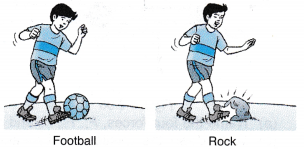
(a) From Figure, when the boy kicks the 1.2 kg football, it moves from rest to 15 m s-1 in 0.1 s. Calculate the impulsive force exerted on the ball.
(b) The boy then kicks a rock of the same mass and it moves from rest to 15 m s-1. However, due to the rigidity of the rock, the time which the foot acts on the rock is only 0.01 s. What is the impulsive force exerted on the rock?
(c) From the answers in (a) and (b), what is the relationship between the time of impact and the impulsive force?
Solution:
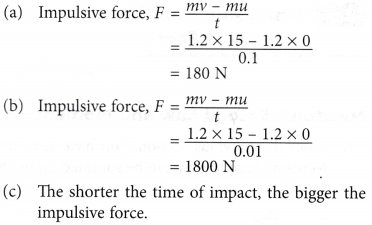
Example 3. A force acts for 0.2 s on a body of mass 2.5 kg initially at rest. The force then ceases to act and the body moves through 4m in the next one second. Calculate the magnitude of force.
Solution: When the force ceases to act, the body will move with a constant velocity. Since it moves a distance of 4 m in 1 s, therefore, its uniform velocity = 4m/s.
Now, initial velocity, u = 0
Final velocity, v = 4 m/s
Time interval Δt = 0.2 s
∴ Acceleration,
\(a=\frac{v-u}{\Delta t}=\frac{4-0}{0.2}=\text{20 m/}{{\text{s}}^{\text{2}}}\)
Force, F = 2.5 × 20 = 50 N
Example 4. A ball of mass 20 gm is initially moving with a velocity of 100 m/s. On applying a constant force on the ball for 0.5s, it acquires a velocity of 150 m/s. Calculate the following
(i) Initial momentum of the ball
(ii) Final momentum of the ball
(iii) Rate of change of momentum
(iv) Acceleration of the ball
(v) Magnitude of the force applied
Solution: Given, m = 20 gm = \(\frac { 20 }{ 1000 }\) kg = 0.02 kg
Initial velocity, u = 100 m/s
Time interval, t = 0.5 s
Final velocity, v = 150 m/s
(i) Initial momentum of the ball = mass × initial velocity
P1 = mu = 0.02 kg × 100 m/s
= 2 kg-ms-1
(ii) Final momentum of the ball = mass × final velocity
P2 = mv = 0.02 kg × 150 m/s
= 3 kg-ms–1
(iii) Rate of change of momentum
\(=\frac{\text{Final}\,\text{momentum}\,\text{-}\,\text{Initial}\,\text{momentum}}{\text{Time}}\)
\( \Rightarrow \frac{\Delta P}{\Delta t}=\frac{3-2}{0.5}=\frac{1}{0.5} \)
⇒ 2.0 kg-ms-1 = 2.0N
(iv) Acceleration,
\( a=\frac{v-u}{t}=\frac{150-100}{0.5} \)
= 100 ms-2
(v) Force, F = mass × acceleration
= 0.02 × 100 = 2.0 N
Example 5. A cricket ball of mass 200 gm moving with a speed of 40 m/s is brought to rest by a player in 0.04s. Calculate the following :
(i) change in momentum of the ball,
(ii) average force applied by the player.
Solution: Mass, m = 200 gm = 0.2 kg
Initial velocity, u = 40 m/s
Final velocity, v = 0
Time, t = 0.04 s
(i) Initial momentum, P1 = mu = 0.2 kg × 40 m/s
= 8.0 kg-ms-1
Final momentum, p2 = m × v = 0.2 × 0
= 0 kg-ms-1
Change in momentum, Δp = P1 – P2
= 0 – 8.0 kg ms-1= – 8.0 kg-ms-1
\( \left( \text{ii} \right)\text{ Average force }=\frac{\text{Change}\,\text{in}\,\text{momentum}}{\text{Time}}\text{ } \)
\( \text{=}\frac{-8.0-0}{0.04}=-200\text{ N} \)
(The negative sign shows that the force is applied in a direction opposite to the direction of motion of the ball).
Example 6. A motorcycle is moving with a velocity of 108 km/hr and it takes 5 s to stop it after the brakes are applied. Calculate the force exerted by the brakes on the motorcycle if its mass along with the rider is 250 kg.
Solution: Given that initial velocity of the motorcycle
= 108 km/hr = 30 m/s
Final velocity = 0 m/s
Time taken to stop = 5s, the mass of the motorcycle with rider = 250 kg.
The change in the velocity of the motorcycle in 5s = 0 – 30 = –30 m/s
Therefore, the acceleration of the motorcycle,
a = \(\frac { -30 }{ 5 }\) = –6 m/s2
The magnitude of the force applied by the brakes is given by the equation,
F = mass × acceleration
= 250 kg × (6) m/s2 = 1500 N
The Effect of Time on the Magnitude of the Impulsive Force
Consider the formula for impulsive force:

If the change of momentum is constant, the magnitude of the impulsive force is inversely proportional to the time of impact.
That is, F ∝ 1/t
Since F ∝ 1/t, the shorter the time of impact, the bigger the impulsive force. The longer the time of impact, the smaller the impulsive force. Hence, by controlling the value of f, we can control the value of the impulsive force, F.
Increasing the time of impact, t to reduce the impulsive force, F
- When a high jumper falls on a mattress, the thick and soft mattress lengthens the time of impact. The impulsive force acting on the high jumper is reduced and he is less likely to suffer any injury.
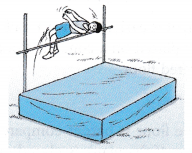
- A long jumper lands on a pit filled with loose sand. The loose sand lengthens the time of impact and reduces the impulsive force acting on him.
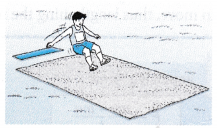
- Figure shows a baseball player stopping a fast moving ball with his hand.

(a) The glove which is made of soft material lengthens the time of impact and reduces
the impulsive force acting on his palm.
(b) When catching the ball, the player moves his hand backward. This action will lengthen the time of impact between the ball and the glove and further reduce the impulsive force acting on his palm.
(c) The combined effect of the glove and the action of the hand prevents injury to the player.
Decreasing the time of impact, t to increase the impulsive force, F
- Pestle and mortar are made of stone. The pestle is used to pound spices like chilli, onion and garlic. The impact time between the pestle and the mortar is very short because of their hard and rigid surfaces. The large impulsive force causes the spices to be crushed easily.

- A blacksmith uses a heavy hammer and anvil to forge metals. An anvil, which is made of steel, has a very hard surface. When the hammer knocks on a piece of metal placed on the anvil, the short impact time causes a large impulsive force to act on the metal.

- A golf club has very hard hitting surfaces to give a big force on the balls. The hard surface gives a short impact time and a large impulsive force.

Example 1. Explain why it is easier to drive a nail into a plank if the plank is placed on a concrete floor compared to a grass covered floor.
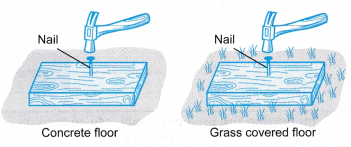
Solution:
The concrete floor is harder compared to the grass covered floor. If the plank is placed on the concrete floor, it will not move when the hammer strikes the nail. As a result, the impact time between the hammer and the nail is short and the impulsive force is big.
A soft surface like the grass covered floor will cause the plank to move, thus lengthening the impact time.

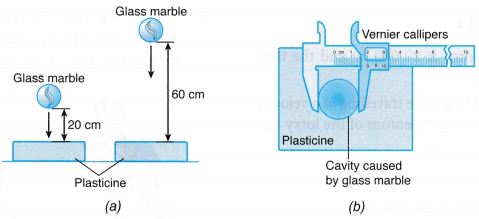
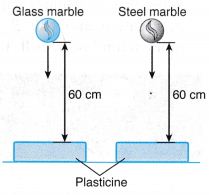
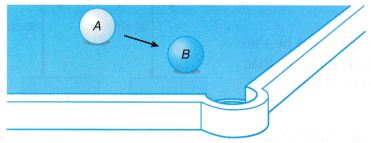
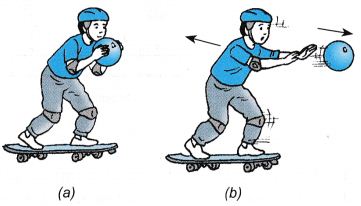
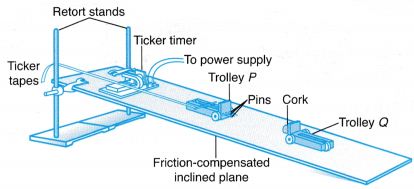



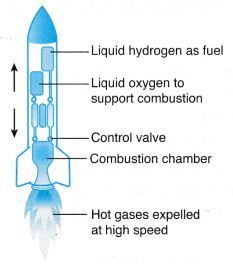


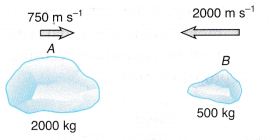


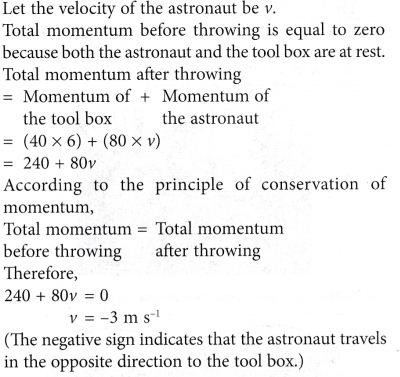

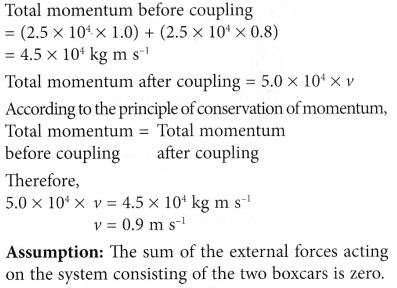
 When a net
When a net 















